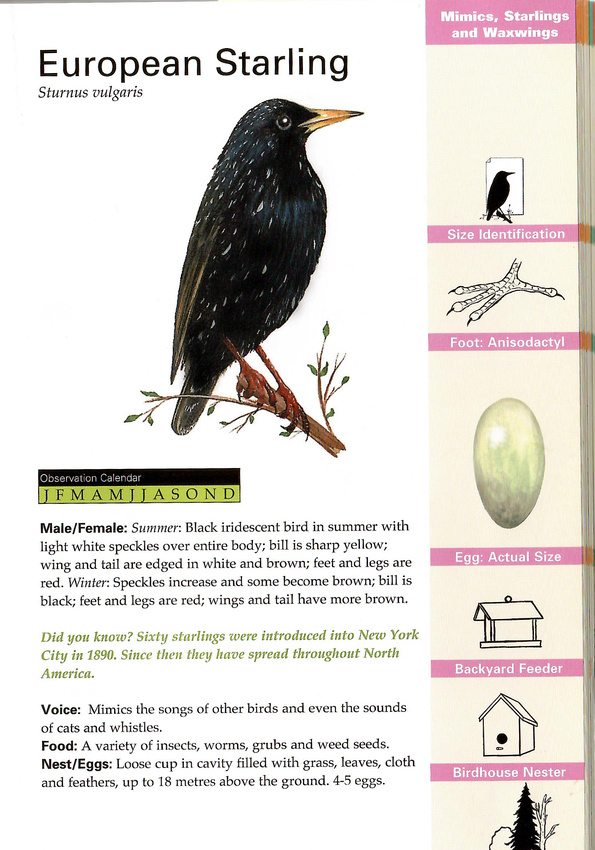Starlets of the Skies
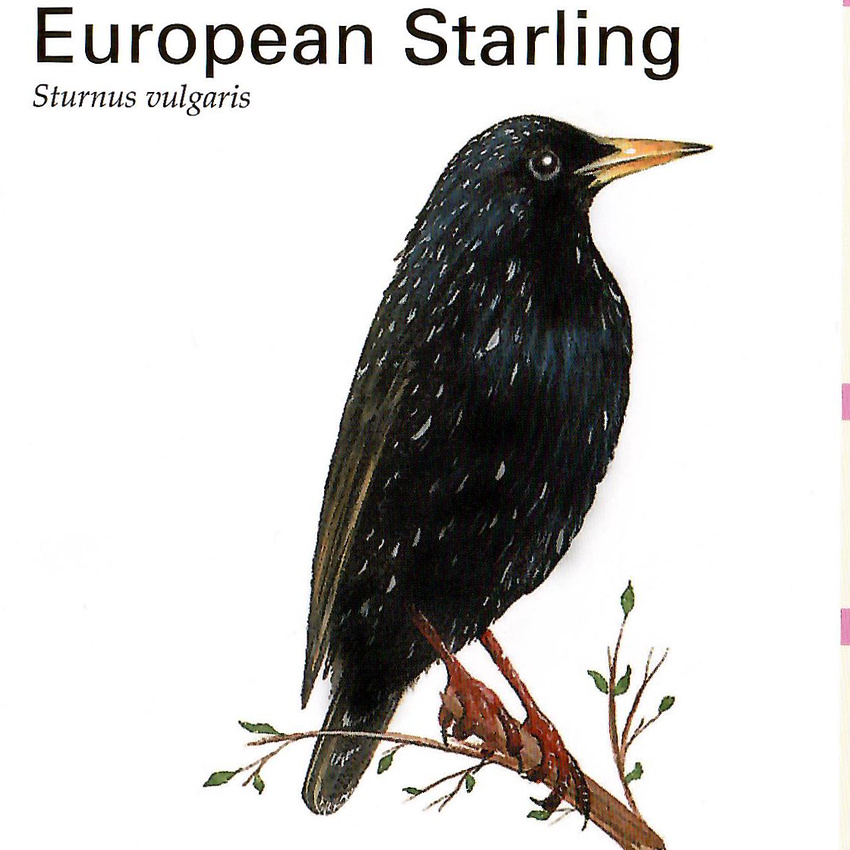

European Starling*
When was the last time you were truly amazed? Astonished? Thunderstruck?
Sometimes I fear that I am taking the parks, trails, waterfront, and marshes, all for granted and that worries me. I’d feel truly ashamed of myself should I ever become pococurante about this rural paradise. Not this month, though…


Last week, at Wheatley Provincial Park, I witnessed my first murmuration. It was directly overhead, very, very close to me. It was bewitching. The flock was dazzling, beautiful, powerful and graceful - their flight patterns breathtakingly intricate. I was awed. I couldn’t move, couldn’t look away. I was stunned by this unexpected display of finely coordinated simultaneous movement of so many birds. It was blissfully wonderful to feel surprised and amazed. Not blasé after all.
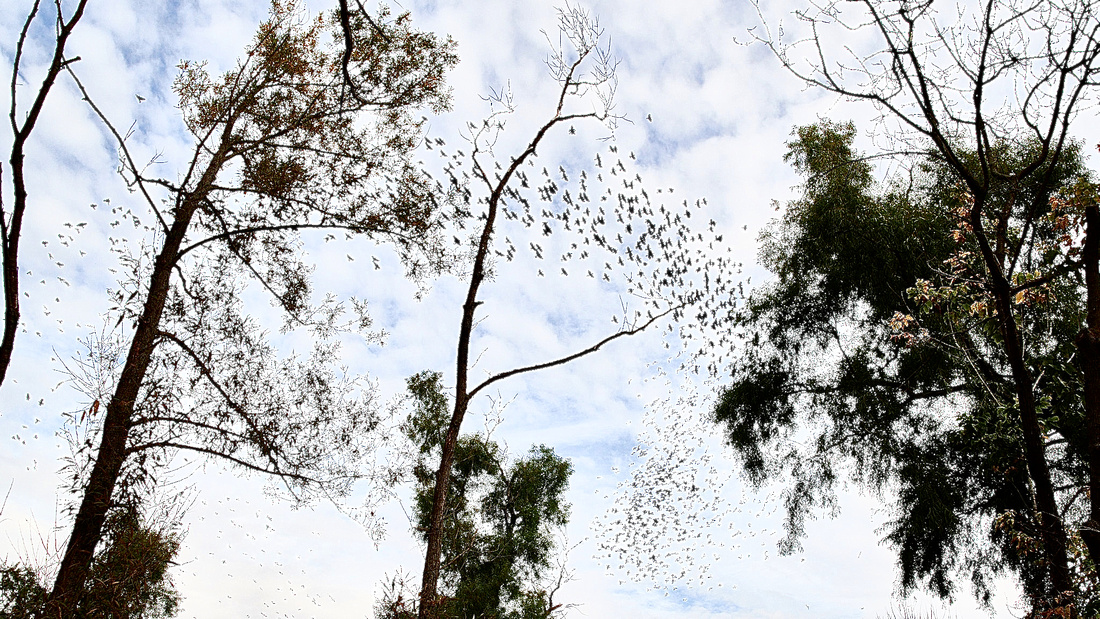

The sensational flight of this gigantic flock was like an ominous dark cloud and the flapping and beating of all those tiny wings was like the thunderous prelude to a dramatic storm. The exquisite choreography was every bit as complicated as Marius Petipa’s Swan Lake or Coppélia - with soft, slow swirls, rapid changes of direction and altitude, elegant curves, technically challenging swoops, all in perfect unison. I was enchanted!
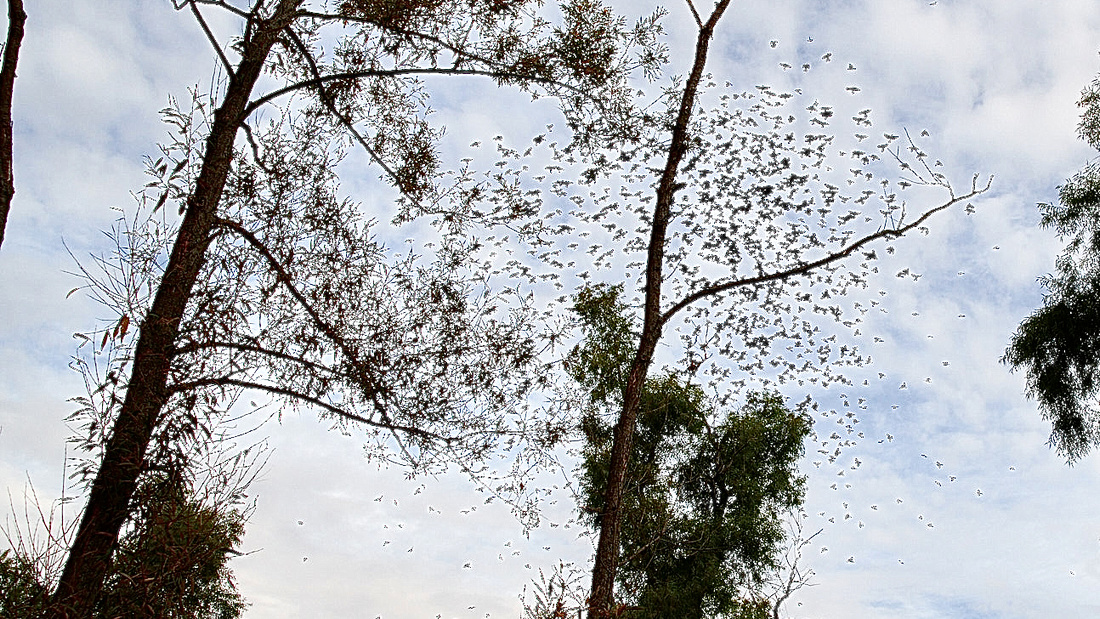

On 7th September I wrote a blog post titled Great Expectations #7 - Exploration Begins… where I wrote, My bird knowledge and my ability to quickly recognise species by either their appearance or song is minimal. Since then my education has progressed, albeit very slowly but occasionally something happens to remind me just exactly how much I do not know!
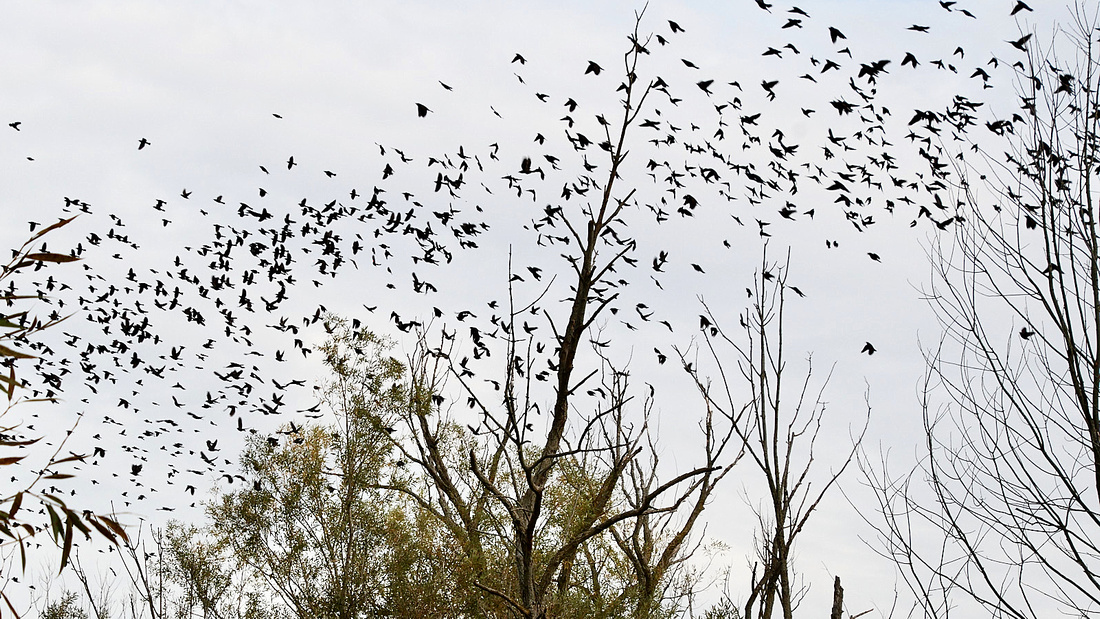

Watching the murmuration, I assumed they were Grackles but I was corrected by the resident naturalist: These birds were plump, had pink legs and toes, dark (black?) eyes and a yellowish tinge to their beaks. He told me those features prove that these birds were European Starlings (Sturnus vulgaris). And just like that, I am a fan of the balletic Starlings! Isn’t it lovely to be amazed? Isn’t it lovely how such tiny and seemingly fragile creatures can knock us for six? Isn’t it lovely that these plump, homely-looking birds become so incredibly elegant and beautiful, en masse, in the sky?
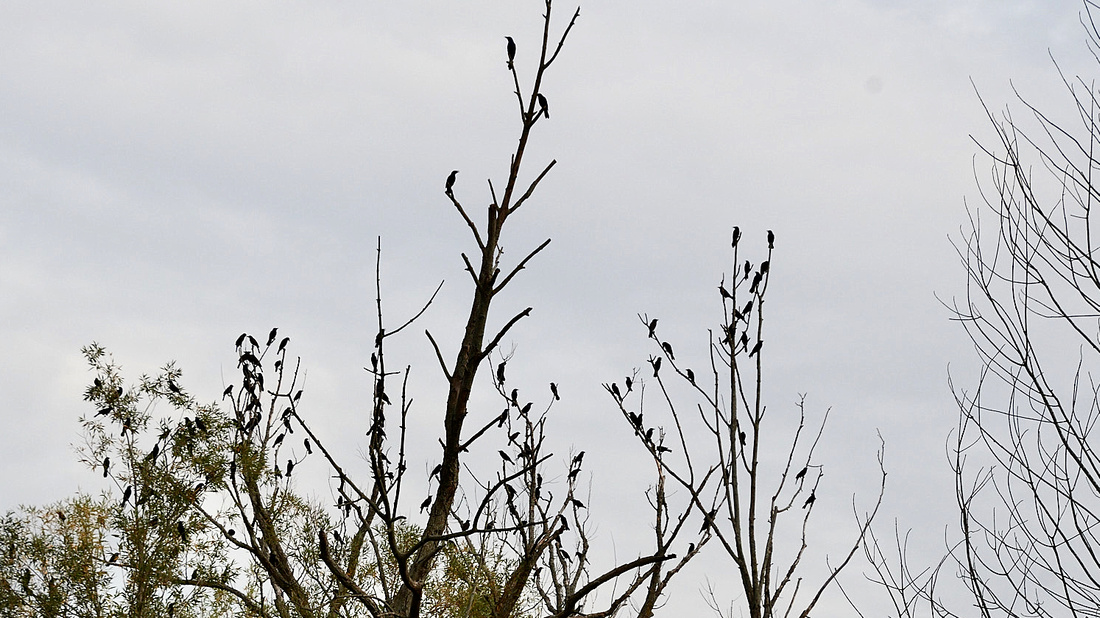

On Friday afternoon I escaped the renovation chaos for a peaceful walk in the warm (24℃!!!) fresh air at Hillman Marsh.
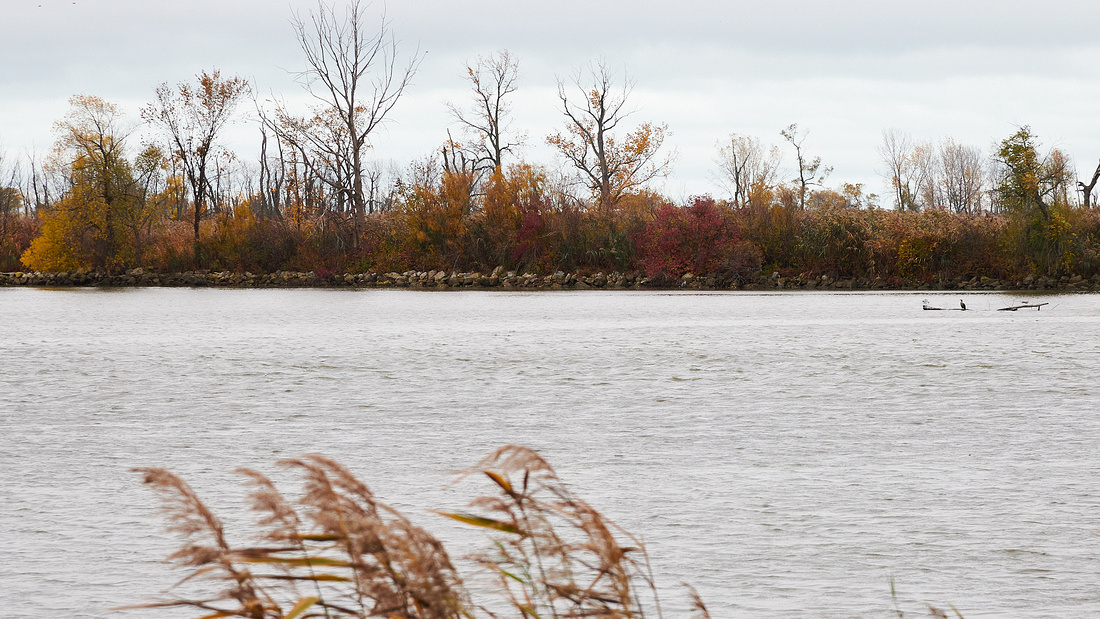

There's nothing like the peace of the countryside. It’s exactly what I was hoping for, needing and expecting. Instead, the serenity was shattered by the strident, sometimes mechanical-sounding, babbling and whistling of the Starling Choir. Hundreds of them. Maybe even thousands, all joining in their hoarse, falsetto chorus. ‘Though their social exchange sounded happy and energetic, it was noisy! There was no murmuration - wrong time of day - just a cacophony of whistling, chattering, warbling, and harsh trills.
I had a lovely, pensive walk and about half-way ‘round the trail loop I decided I needed to know more about Starlings. This is what I’ve discovered so far:
- Starlings are perching birds (Passeriformes).
- Most birds “hop” but our balletic Starlings walk on their toes.
- Starlings are social birds that thrive in large communal roosts.
- Starlings are eco-friendly exterminators. The bulk of their diet is harmful insects. Ontario farmers historically blame Starlings for decimating their crops — particularly corn — however:
- Research has proven time and again that the beloved Robin does more damage, consumes more corn, than the Starling population.
- Grasshoppers are a common pest that can devastate entire crops. Starlings eat Grasshoppers.
- Summer is Japanese Beetle season. Japanese Beetles devour trees, shrubs, fruits, vegetables, field crops and sod. Starlings eat Japanese Beetles.
- The pestilent white grub feeds on the roots of all types of vegetation, and is particularly harmful to vegetables. Starlings eat grubs.
- Granary Weevils, the type we have here in southern Ontario, can obliterate whole fields of the grains that form their habitat — corn, oats, barley and even Sunflower seeds. Starlings eat Weevils.
And, be prepared to swoon a little…
- The males build the nests and adorn them with flowers to attract females.
- To protect their hatchlings, males purify their nests with sprigs of fresh herbs to fend off pests and unwanted visitors (raiders).
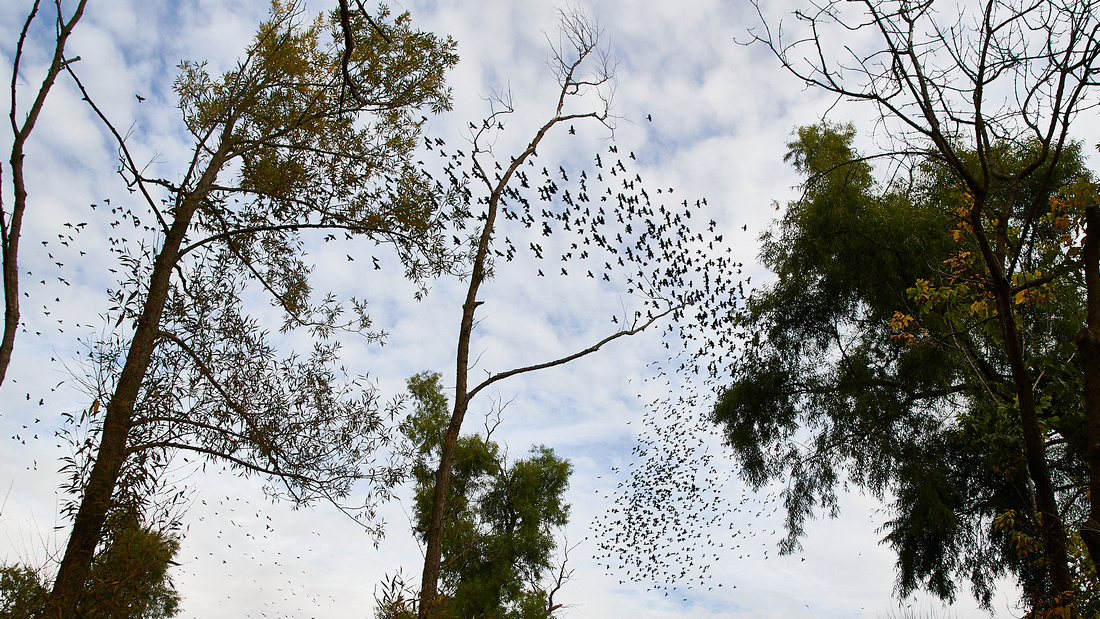

In many parts of North America, Starlings have been classified as an invasive species, but not here in Ontario. Not yet. And that makes me very happy!
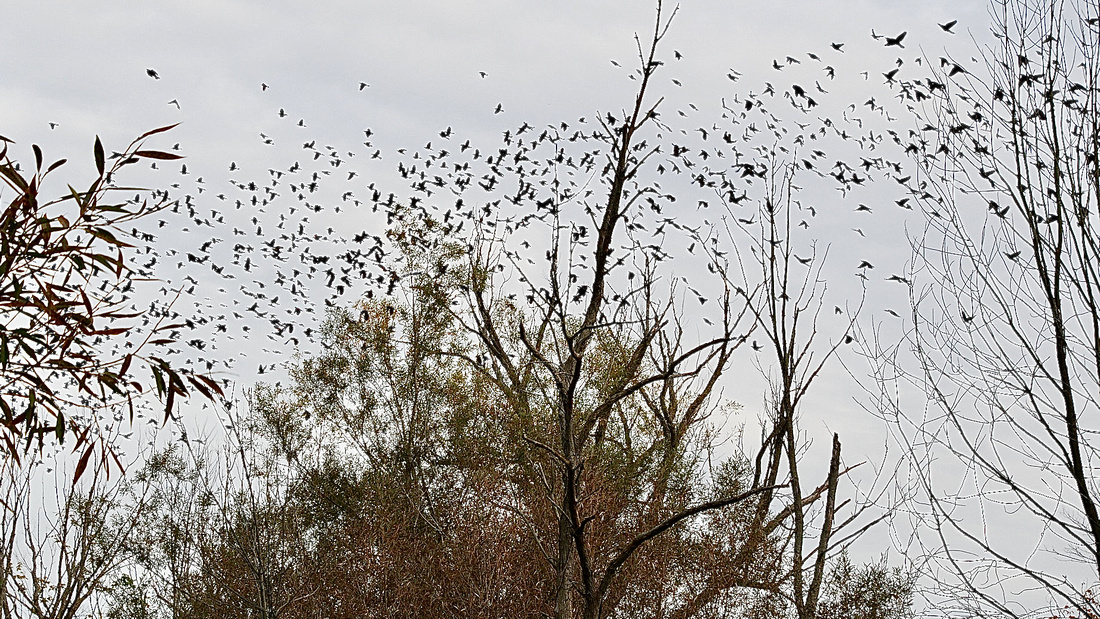

Starlings are clever, creative and constructive. Darlings or devils, adored or abhorred, their harebrained chorus ensures they cannot be ignored and their murmurations are surely one of the lively arts we can all admire and enjoy.
’Til next time, y’all…
Here’s the thing about astonishment - I always forget to shoot. In this instance, I absentmindedly set my camera down on the bench, better to watch the spectacle before me. Hence the pathetic images - with apologies, the murmuration was nearly over when it occurred to me that I ought to be taking pictures.
*Jeffrey C. Domm, pg. 189 Ontario Birds (full page below).
